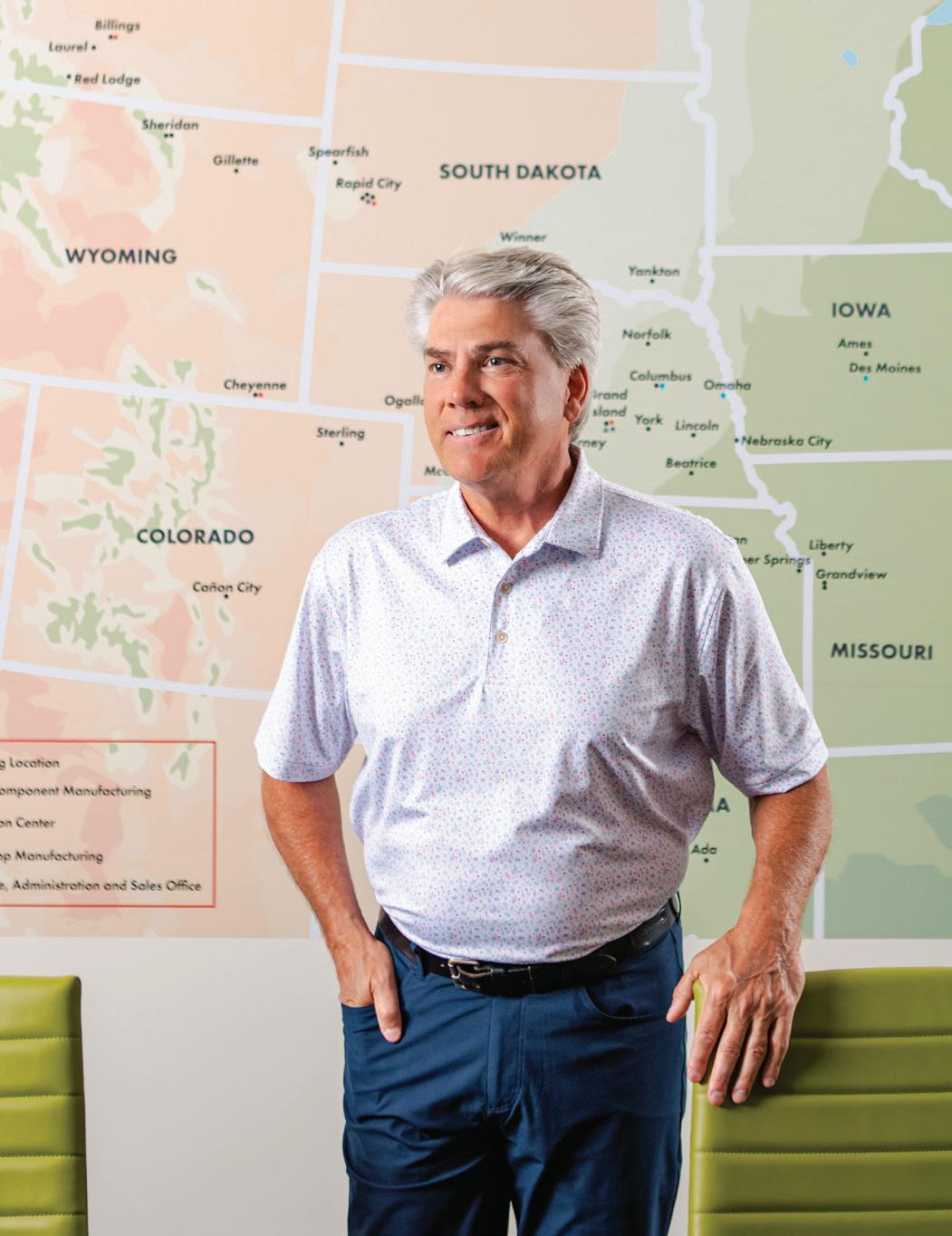
3 minute read
GOING ALL IN
Esops Gaining Favor With Legacy Companies
Jay Stewart, CEO of Drake-Williams Steel, has seen a lot of change in his 33 years with the company. Technology, training protocols for employees, and market shifts have all come and gone during his career.
One change, however the company’s shift to 100% employee ownership in October 2014 is as reflective of the past as it is forward-looking. John and Dave Williams, fourth-generation owners, made the decision to implement an employee stock ownership plan (ESOP) as a lasting embodiment of the high regard in which ownership had always held its 300 employees.
“The family owners had a strong desire to see the company end up in the employees’ hands in some form or another,” Stewart said. “And they had made a conscious decision to explore those options and to move down that path many years before that. We explored a variety of paths there; we looked at a management buyout, we looked at other forms of employee ownership, and we settled in on ESOP.” business owners have no existing transition plan, so we’re doing a great deal of outreach and promotion of the employee stock ownership plan model to those retiring baby boomer business owners.”
Across the country, companies of all shapes and sizes are taking similar steps to transfer ownership of companies from private hands to that of employees. ESOPs are basically an employee retirement benefit whereby shares of company stock are allocated to all employees and governed by some of the same laws and regulations as 401(k) plans. Unlike 401(k)s, however, employee stock is almost always issued at no cost to employees, making them more attractive than other retirement benefits that require employee contributions.
According to The ESOP Association based in Washington, DC, there are more than 6,500 ESOP companies representing more than 10.6 million employee owners coast to coast. Industries with the highest number of ESOP companies represent a varied cross-section of the business world, including manufacturing, science, technology, real estate, finance, and insurance.
“Without a doubt there is a surge in new ESOP formations taking place across the country right now,” said Jim Bonham, president and CEO of The ESOP Association. “One, there have been a lot of changes in public policy recently, both at the federal and at the state level, to encourage more ESOP formation and more awareness of the benefits of selling your business to your employees.
In addition to providing a nice benefit for workers, local companies said ESOPs provide additional benefits overall, particularly when it comes to retaining employees.
“I think in terms of retention it is just a fantastic tool, for many reasons,” said Cathy Maddox, ownership coordinator with Commonwealth Electric Company of the Midwest, based in Lincoln. “When you are an employee-owner, you have some skin in the game. This is your company. What you see every year on your statement is in large part a direct result of how you’ve done your job. Have you done it efficiently? Have you done it effectively?”
Commonwealth Electric phased in its ESOP from 60% ownership among eligible employees when the plan was introduced in 2017 to 100% three years later. Maddox, who handles the ESOP program full time, said such programs also benefit the community at large.
-JIM BONHAM
“Second, over the next 10 years there are about 2.8 million business owners who are baby boomers who will need to retire and do something with their business upon their retirement. This will actually be the single largest transfer of wealth-producing assets in the history of the world. About 65 percent of those
“There are so many businesses that are either going to go out of business, which means jobs lost, or are being bought by a bigger corporation, which could mean jobs being moved elsewhere,” she said. “If those companies can become employee-owned that helps ensure those jobs stay in place and that’s advantageous to an entire community.”
Dave Anderson, president and CEO of Mead Lumber Company, said education is the key to a successful ESOP program, especially early on in the process.
“It’s an ongoing challenge to explain everything about how ESOP works,” he said, noting the company has been 100% employee-owned since 2014. “People who have been here for a time get the concept. But still, when it comes close to retirement, they have questions about how distributions work and how they get their money out.
“As for newer workers, it probably takes three to four years for frontline, operational employees to understand it. So, we spend a lot of time on the educational side of it.”

Speaking anecdotally, Anderson said having such a program can result in better employee engagement as people look at their work as an owner would, boosting efficiency, safe behaviors, and innovative thinking.


“I think the dedication level is higher within the ESOP structure because they see the tangible way that they’re benefitting from the decisions that they make,” he said. “And that’s an item that we spend a lot of time from the education standpoint depending on your position, what are the decisions you’re making every day that either add value or subtract value. ESOP is absolutely a positive influencer and it’s great for the culture of our company.”
For more information, visit esopassociation. org/chapters/iowa-nebraska; dwsteel.com; commonwealthelectric.com; and meadcompanies.com.
B2B

FEATURE | STORY BY LEO ADAM BIGA | PHOTO BY BILL SITZMANN










